The art of glassworking, a mesmerizing blend of skill and science, has been instrumental in the evolution of laboratory instruments. How did this ancient craft shape modern scientific exploration? What role does it continue to play in the ever-evolving landscape of laboratory technology?
Glasswork mastery, from its ancient roots to its critical role in contemporary and future scientific endeavors, represents a remarkable journey of innovation and adaptation. This exploration is not just a historical recount but a testimony to the enduring relevance of glasswork in the realm of scientific research.
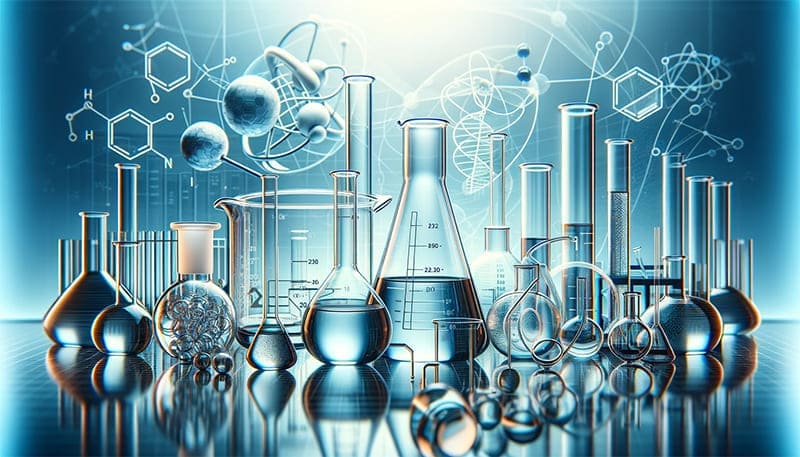
Tracing the Origins: The Historical Significance of Glass in Science
The Ancient Beginnings
The Invention of Glass in Mesopotamia
Around 1000 BC, in Mesopotamia, the art of glassmaking was born. Initially, glass blowing techniques were used to craft various items such as wine goblets, vases, and beads. These glass artifacts were primarily for decorative purposes and for containing liquids.
The Medieval Transformation
Diversity in Glassmaking Techniques
Over time, glassmaking saw significant advancements. Techniques like mold casting and fine blowing were developed, leading to more intricate and complex glass products. Glassware found widespread use in various aspects of daily life, from tableware and windows to eyeglasses.
The Dawn of Laboratory Glassware
The Introduction of Glass Instruments in Laboratories
The real transformation began in the 17th century when Dutch scientists invented the glass test tube. This innovation made it easier to conduct chemical reactions and observe experimental results in labs. Soon, a variety of laboratory glassware like beakers, flasks, and titration tubes emerged, becoming essential tools in scientific research.
The Era of High-Precision Glass Instruments
Advancements in Modern Glass Technology
With ongoing technological advancements, modern glass instruments have reached new heights of precision and stability. Materials like optical glass and quartz glass, known for their high heat and acid resistance, are now used in extreme experimental conditions. Contemporary manufacturing techniques have also enabled the creation of more intricate, high-quality glass instruments.
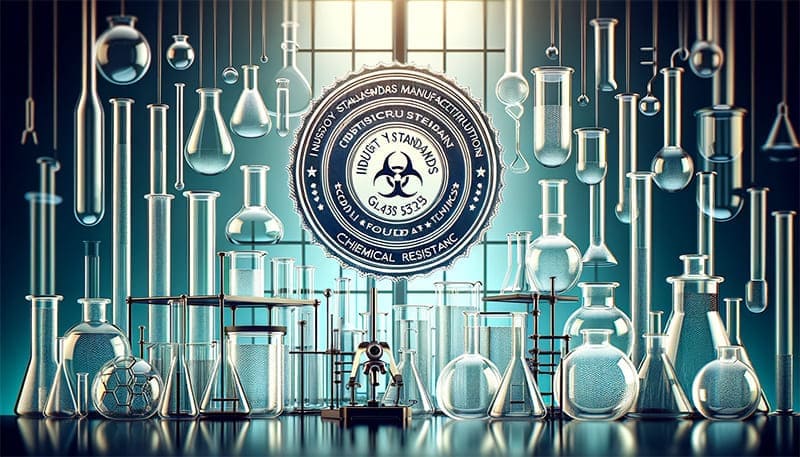
International Standards for Glass Laboratory Instruments
International standards play a crucial role in ensuring the precision, reliability, and safety of laboratory work involving glass instruments. These standards provide unified guidelines for the design, manufacture, and use of glass instruments, fostering international trade and technological exchange. Here’s a detailed exploration of the international standards for glass laboratory instruments:
Overview of International Standards
The international standards are primarily developed by the International Organization for Standardization (ISO) and other relevant international bodies. These standards encompass various aspects of glass instruments, including materials, dimensions, shape, capacity, graduation, and accuracy. Adherence to these standards enables laboratories to achieve accurate and reliable experimental results while ensuring the safety of laboratory personnel.
Key International Standards
ISO 3582: This standard outlines the general technical requirements for laboratory glass instruments and glassware. It specifies the basic requirements for the materials, dimensions, shape, capacity, and graduation of glass instruments, making it one of the core standards for laboratory glassware.
ISO 3897: This standard focuses on the thermal properties of glass instruments and glassware, determining these properties through specific testing methods. This is crucial for experiments conducted under specific temperature conditions, ensuring the safe and effective use of glass instruments.
ISO 8468: This standard provides the methods for testing the resistance of glass instruments and glassware to freezing. This is significant for experiments conducted at low temperatures, ensuring the stability and reliability of the instruments under extreme conditions.
ISO 6709: This standard deals with the calibration and verification methods for laboratory glass instruments. Following this standard ensures the accuracy and consistency of glass instruments, thereby enhancing the reliability of experimental results.
ISO 1773: This standard focuses on the chemical durability of glass instruments, especially their resistance to acids, bases, and other chemicals. This is vital for protecting laboratory personnel and ensuring the accuracy of results in chemical experiments.
These international standards are essential for maintaining the quality and integrity of glass laboratory instruments, ensuring they meet the rigorous demands of scientific research.
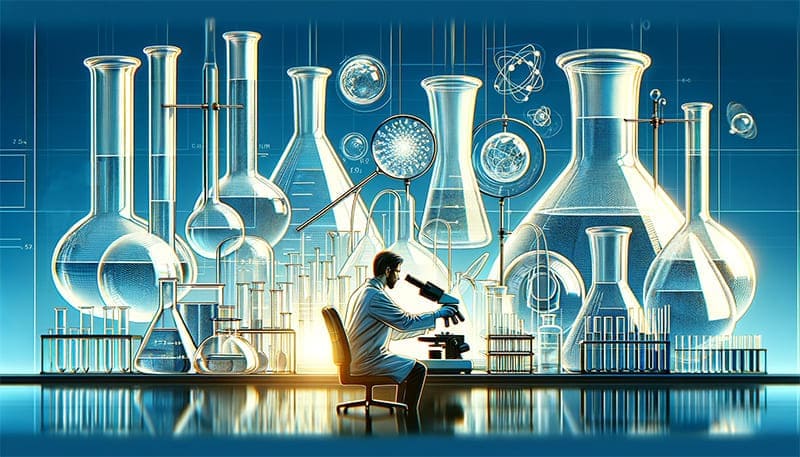
The Manufacturing Process of Glass Laboratory Instruments
The process of manufacturing glass laboratory instruments typically involves the following steps:
1. Selection of Raw Materials
Glass instruments are primarily made from glass, and the quality of glass varies depending on the type and specification of the instrument. The materials used should be chemically stable, corrosion-resistant, and easy to process. To ensure the quality and safety of glass instruments, the selection of raw materials should also comply with relevant national and industry standards.
2. Design
Based on experimental requirements and safety standards, designers create product blueprints, determining the dimensions and shapes of each component. The design process considers the strength, corrosion resistance, and ease of cleaning of the glass instruments to ensure they meet experimental and safety requirements. Designers also review and modify the blueprints according to manufacturing processes and technical requirements, ensuring feasibility and cost-effectiveness.
3. Processing
The manufacturing process typically involves cutting, grinding, firing, and shaping the selected raw materials. Initially, the material is cut to obtain the required shape of the glass blank. The surface imperfections and irregularities are then removed through grinding and polishing to achieve a smooth and neat surface. Next, the glass is softened through firing and shaping processes at high temperatures to facilitate molding. Finally, the processed glass instruments are cleaned and inspected to ensure quality and safety.
4. Assembly
After the glassware is processed, it undergoes assembly. This process includes assembling the various parts together and using materials like adhesives to fix and seal the edges and joints. During assembly, attention is paid to the positioning, direction, and quality standards of each component. The assembled glass instruments are then inspected to ensure they meet experimental requirements and safety standards.
5. Inspection
After manufacturing, all glass instruments undergo inspection to ensure they meet quality and safety standards. The inspection covers aspects such as appearance quality, dimensional accuracy, pressure resistance, and corrosion resistance. For special-purpose glass instruments, more stringent inspections and tests are conducted to ensure they meet relevant standards and requirements.
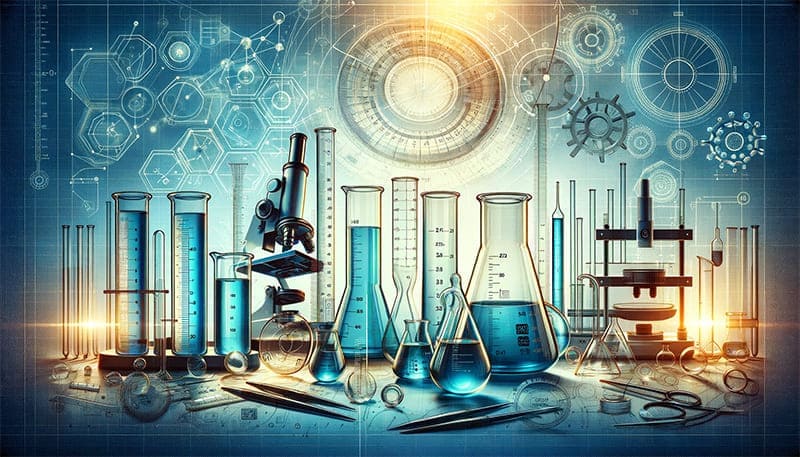
Standards for Qualified Laboratory Glass Instruments
Qualified laboratory glass instrument standards are crucial for ensuring the quality, accuracy, and safety of the instruments. Here are some common standards for qualified laboratory glass instruments:
Material Quality: Qualified lab glass instruments should be made from high-quality, pure glass without obvious bubbles, cracks, impurities, etc. The quality of the material directly affects the instrument’s accuracy and reliability.
Accuracy and Precision: Lab glass instruments should have a certain level of accuracy and precision to meet experimental requirements. For example, volumetric flasks and titration tubes should have accurate capacities, while beakers and flasks should have good heat and cold resistance.
Sealing: Glass instruments should have good sealing properties to prevent leaks during experiments. For example, glass stoppers and rubber stoppers should fit tightly to ensure the accuracy of experimental results.
Pressure Resistance: For glass instruments that need to withstand pressure, such as pressure bottles and gas washing bottles, they should have a certain level of pressure resistance to ensure safety and reliability during use.
Clear Markings: Markings on glass instruments should be clear and accurate, including the name, specifications, and capacity of the instrument. These markings help users correctly use the instruments and ensure the accuracy of experimental results.
Ease of Cleaning: Laboratory glass instruments should be easy to clean, allowing users to wash and maintain them after use. Clean instruments reduce the growth of bacteria and corrosion, extending their lifespan.
Compliance with International and Industry Standards: Laboratory glass instruments should comply with international and industry standards, such as ISO and ASTM, as well as industry-specific standards (e.g., pharmaceutical, environmental industries) to ensure quality and safety.
Safety Performance: Laboratory glass instruments should have good safety features to prevent accidents during use. For example, they should have impact resistance to reduce the risk of breakage and be designed to avoid excessive heat or sparks for user safety.
Ease of Operation: Laboratory glass instruments should be simple to operate and maintain, reducing the risk of errors and improving the efficiency and quality of experiments.
Packaging Standards: For packaged laboratory glass instruments, appropriate packaging standards should be followed. Packaging materials should provide adequate protection to prevent damage during transportation and storage, and packaging markings should be clear and accurate for easy identification and management.

Detecting Flaws and Damage in Glass Laboratory Instruments
Glass instruments play a crucial role in laboratories, but prolonged use or improper handling can lead to flaws or damage. To ensure the accuracy and reliability of experimental results, it’s important to regularly check for any defects or damage in glass instruments. Here are some common methods for detection:
1. Visual Inspection
Visual inspection is the most basic method, involving a thorough examination of the glass instrument’s surface for flaws, cracks, scratches, or discoloration. This method is straightforward but requires careful observation, as some minor defects may not be easily noticeable.
2. Light Transmission Inspection
Light transmission inspection involves examining a glass instrument under a light source to detect internal flaws or damage. By placing the instrument under light, one can observe its transparency and look for issues like cloudiness, bubbles, or cracks. If any anomalies are detected, further inspection is needed.
3. Magnifying Glass Inspection
Using a magnifying glass to inspect the surface and interior of glass instruments can reveal defects or damages that are not visible to the naked eye. This method allows for a clearer observation of details like surface scratches or internal cracks. It requires some experience and skill but can effectively identify issues with glass instruments.
4. Acoustic Inspection
Acoustic inspection uses sound waves to detect internal flaws or damage in glass instruments. This method involves scanning the instrument with an acoustic detector to identify internal cracks or bubbles. It can reveal defects that are not visible to the naked eye but requires specialized equipment and technical expertise.
5. Chemical Testing
Chemical testing involves applying chemical reagents to the surface of glass instruments to detect flaws or damage. Observing changes like discoloration or material degradation can indicate the chemical properties and corrosion resistance of the glass. However, this method requires the selection of appropriate chemical reagents and careful handling.
6. Other Detection Methods
In addition to the methods mentioned above, there are other techniques such as X-ray inspection and infrared detection. These methods can provide a deeper analysis of the internal structure and properties of glass instruments but require specialized equipment and expertise.
Regularly employing these inspection techniques can help maintain the integrity and functionality of glass laboratory instruments, ensuring safe and accurate experimental procedures.
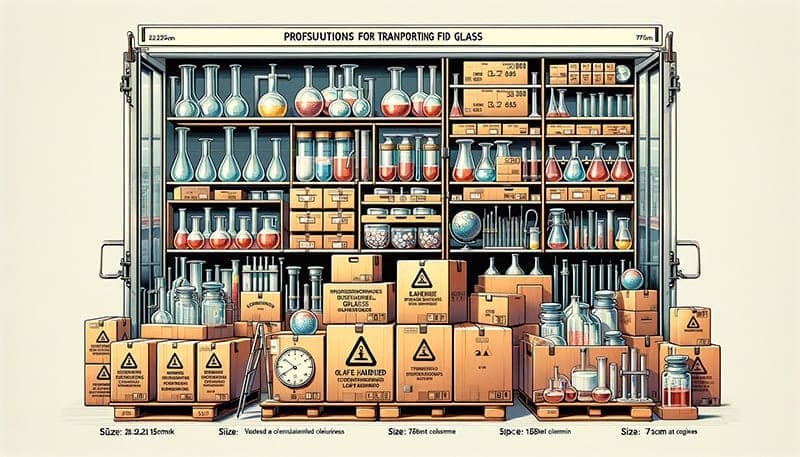
Precautions for Transporting and Storing Glass Laboratory Instruments
The process of transporting and storing glass laboratory instruments requires careful attention, as it directly impacts the instruments’ integrity, performance, and lifespan. Here is a detailed exploration of the issues to consider:
1. Precautions During Transportation
Protective Packaging: Before transportation, glass instruments must be properly packaged to prevent breakage and contamination. Packaging materials should have cushioning properties, such as foam or bubble wrap, to minimize the impact of vibrations and shocks on the instruments. Additionally, fillers should be placed inside the packaging to ensure the instruments do not move within the box.
Clear Labeling: The packaging should clearly indicate the name, specifications, quantity, and production date of the instruments for easy identification and acceptance. Fragile, toxic, or hazardous glass instruments should also have appropriate warning labels attached.
Careful Handling: During handling, it is essential to lift and carry the items gently to avoid rough treatment such as throwing or dragging. For larger or heavier glass instruments, handling tools like forklifts or lifts should be used to ensure safe transportation.
Maintain Cleanliness: During transit, it’s important to keep the glass instruments clean, avoiding dust, oil, and other contaminants. If necessary, they can be wiped with a clean cloth or tissue.
2. Precautions for Storage
Stable Environment: Store glass instruments in a stable, controlled environment. Avoid places with extreme temperatures, humidity, or direct sunlight, which can cause damage or degrade the quality of the glass.
Organized Shelving: Glass instruments should be stored on sturdy, well-organized shelves. Heavier items should be placed on lower shelves to reduce the risk of accidents. Ensure there’s sufficient space between items to prevent contact and potential damage.
Dust-Free Conditions: Store glass instruments in a dust-free environment. If necessary, cover them with a clean, dry cloth or store them in closed cabinets to prevent dust accumulation.
Accessibility and Safety: Arrange the instruments in a way that they are easily accessible without the need for stretching or reaching high, which can lead to accidents. Keep them away from areas with high foot traffic or risk of physical impact.
Regular Inspection: Regularly inspect the stored glass instruments for any signs of damage or wear. This ensures they remain in good condition and are safe for use.
By following these guidelines for transporting and storing glass laboratory instruments, their integrity and functionality can be preserved, ensuring their readiness for accurate and safe use in laboratory settings.
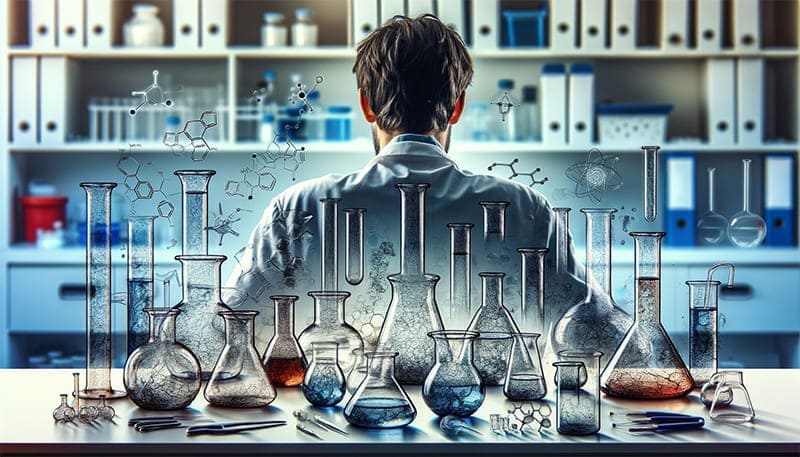
Future Trends and Innovations in Glass Laboratory Instruments
As indispensable tools in chemical laboratories, the future trends and innovation directions of glass laboratory instruments are widely observed. With the progress of technology and increasing experimental demands, glass instruments will face more challenges and opportunities in the future. Here’s a detailed discussion on these trends and directions.
Development Trends
1. Intelligence and Automation
With rapid advancements in technologies like the Internet of Things (IoT) and Artificial Intelligence (AI), the level of intelligence and automation in glass instruments will continue to rise. For instance, embedding sensors and chips in glass instruments can allow real-time monitoring and control of parameters like temperature, pressure, and liquid levels, improving the precision and efficiency of experiments. Additionally, the development and application of automated experimental systems will become a significant trend, leading to more automated and unmanned operations in laboratories.
2. Miniaturization and Integration
Miniaturized experimental techniques are gaining attention due to their advantages such as lower reagent consumption, faster reaction times, and eco-friendliness. As a crucial component in miniaturized experiments, the level of miniaturization and integration in glass instruments will increase. For example, microfluidic chip technology can achieve micron-level fluid control and experimental operations, offering new solutions for chemical synthesis and biological analysis.
3. High Performance and Multifunctionality
With the continuous elevation of experimental demands, the performance and functionality of glass instruments are also expected to increase. Future glass instruments will develop towards high performance and multifunctionality. For example, high-performance glass materials with excellent heat resistance, corrosion resistance, and mechanical strength will be widely used in the manufacture of experimental instruments. Moreover, glass instruments will possess more functions like optical and electromagnetic properties to meet diverse experimental needs.
Innovation Directions
1. Application of New Materials and Processes
The application of new materials and processes is a crucial direction for innovation in glass instruments. For example, using novel glass materials can enhance the heat resistance, corrosion resistance, and mechanical strength of instruments. Advanced manufacturing processes can achieve precision fabrication and complex structure production. Additionally, new coating technologies and surface treatment techniques can improve the performance and stability of glass instruments.
2. Green, Environmental Sustainability
Environmental protection and sustainable development are important contemporary issues and critical innovation directions for glass instruments. In the future, the manufacture and use of glass instruments will focus more on environmental and sustainable aspects. For instance, using biodegradable and recyclable materials to manufacture glass instruments, optimizing instrument structure and design to reduce material and energy consumption, and developing low-energy-consumption, low-emission experimental techniques.
3. Interdisciplinary Integration and Innovative Applications
Interdisciplinary integration and innovative applications are another important direction for innovation in glass instruments. By combining glass instruments with technologies from other disciplines, new experimental instruments with novel functions and applications can be developed. For example, integrating glass instruments with optics, electronics, biology, and other technologies can lead to new experimental instruments for applications in biological detection, drug screening, and environmental monitoring.
These trends and directions point towards a future where glass laboratory instruments are more intelligent, efficient, and versatile, significantly contributing to the advancement of scientific research and experimentation.
Conclusion
This journey through the realm of glass laboratory instruments is not just about appreciating a craft; it’s a call to embrace the fusion of tradition and innovation. As we stand on the brink of new scientific breakthroughs, let us acknowledge the past, engage with the present, and eagerly anticipate the future of glasswork in laboratories. Together, let’s continue to explore, innovate, and push the boundaries of what’s possible, honoring the legacy and potential of this timeless art in science.










